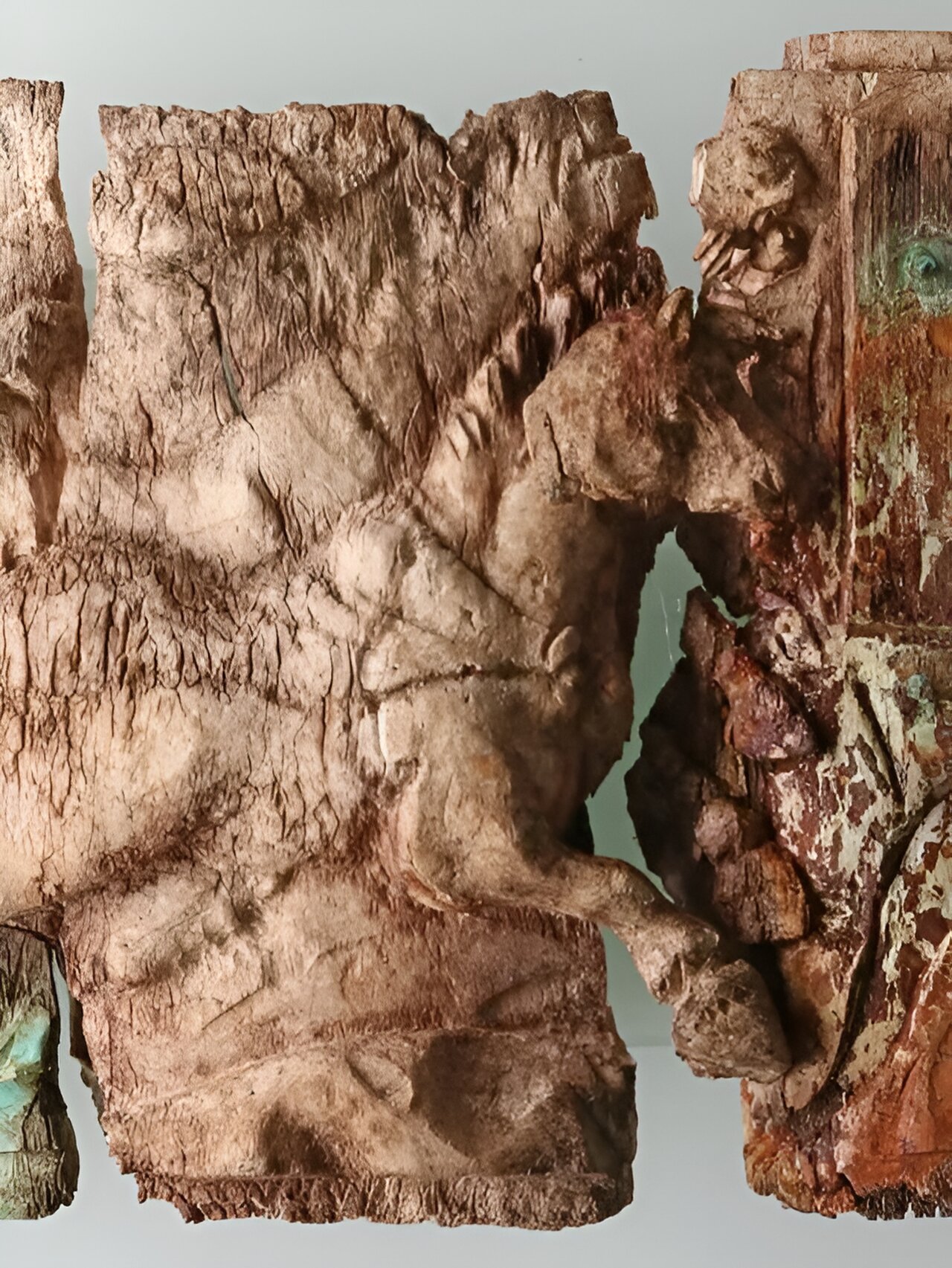In the municipality of Irschen, southern Austria, a remarkable archaeological discovery has captivated the attention of historians and art enthusiasts alike. Since 2016, a team of archaeologists from the University of Innsbruck has been excavating a late antique hilltop settlement, unearthing a wealth of remarkable findings. However, none have been as sensational as the discovery made two years ago: a stunning Christian reliquary hidden in a previously unknown church.
Discovery of a Marble Shrine
On August 4, 2022, the team led by archaeologist Gerald Grabherr uncovered a marble shrine measuring approximately 20 by 30 centimeters (8 by 12 inches) under the altar in a side chapel of an early Christian church on the Burgbichl. Inside this shrine, they found a heavily fragmented ivory “box” or pyx, adorned with intricate Christian motifs.

Reliquaries like this one are typically the holiest part of a church, and it is not uncommon for them to be removed when a church is abandoned. However, this pyx was left behind, making it the first of its kind found in an archaeological context in Austria. “We know of around 40 ivory boxes of this kind worldwide, and as far as I know, the last time one of these was found during excavations was around 100 years ago,” explained Gerald Grabherr.
Hilltop Settlement in Irschen
Irschen, located in the Carinthian Drava Valley, was home to a late antique hilltop settlement that has been abandoned since around 610 AD. Archaeologists have documented several dwellings, two Christian churches, a cistern, and various personal belongings of the settlement’s former inhabitants, including a star-shaped baptismal font and the recently discovered reliquary.

“Towards the end of the Roman Empire, times became more uncertain, especially in the peripheral provinces of the empire,” explained Grabherr. As a result, inhabitants founded settlements on hilltops that were easier to defend. The year 610 marks a significant turning point with the Battle of Aguntum, where Slavic armies defeated Baiuvari settlers, marking the end of the region’s affiliation with the ancient Mediterranean world and Christianity.
The Challenge of Conservation
Since its discovery, the 1,500-year-old ivory reliquary has been conserved at the University of Innsbruck. Ulrike Töchterle, head of the restoration workshop, explained the complexities involved in preserving such a fragile artifact. Ivory, especially when stored underground, absorbs moisture and becomes very soft, making it prone to damage. Uncontrolled drying can cause shrinkage and cracks.

“Due to the very high humidity of 90 percent in the marble shrine immediately after salvage, the risk of condensation and mold formation was very high, and the contents could not be allowed to dry out too quickly,” Töchterle noted. Over the past two years, the team has carefully dried and conserved the ivory fragments to prepare them for scientific analysis. Although the pyx can no longer be restored to its original state due to deformation, researchers are working on a 3D reconstruction.
Depictions of Saints
The pyx features elaborate carvings of biblical scenes. One end depicts Moses receiving the laws from a hand emerging from the sky at the foot of a mountain, representing the handing over of the laws to Moses on Mount Sinai. The pyx also includes scenes from the New Testament, such as a man being lifted to heaven by a hand coming out of the clouds, believed to represent the Ascension of Christ. This unique depiction of the Ascension with a two-horse chariot, or biga, is previously unknown in Christian art.

Ongoing Analyses
Further investigations are underway to determine the origins of the marble, ivory, and metal components of the pyx. “We still need to determine the exact origin of the marble, and we also want to specify the origin of the ivory and the elephant using stable isotope analyses,” explained Töchterle. The hinges of the pyx, made of metal, and the glue used for the ivory are also being examined, and wooden parts found in the marble box, presumably part of the pyx’s clasp, are being analyzed to determine their type, origin, and age.
Conclusion
The discovery of this stunning 1,500-year-old ivory reliquary in Austria has captivated the archaeological and art-historical community. The intricate carvings, the unique depictions of biblical scenes, and the challenges of conserving such a fragile artifact have all contributed to the significance of this remarkable find. As the ongoing analyses continue to shed light on the origins and history of this remarkable piece, it is clear that the Irschen hilltop settlement has much more to reveal about the rich cultural and religious heritage of the region during the late antique period.




